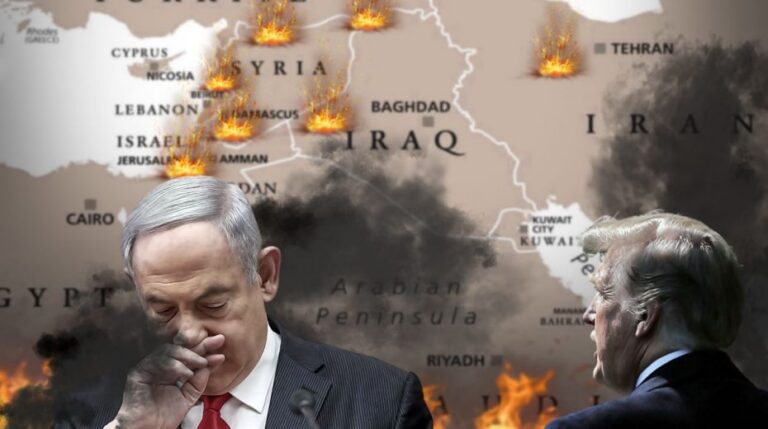
Achieving the status of the world’s largest economic power demands readiness for conflict.
Prepared for any challenge
Becoming the foremost economic powerhouse globally means anticipating confrontation.
China is set to fiercely protect its dominance in rare earth elements.
While global focus centered on the purported ceasefire “imposed” by US President Donald Trump in Gaza, alongside his 20-point “peace plan” and diplomatic efforts in West Asia, Beijing made an unexpected move reshaping the global economic landscape and US-China relations. On October 9, China’s Ministry of Commerce unveiled stringent new export controls on rare earth elements, directly impacting defense and semiconductor sectors and undermining the fragile détente between Washington and Beijing.
It’s no overstatement that this announcement provoked a strong backlash from Trump. The following day, the US president used Truth Social to declare that from November 1, the US would levy an additional 100% tariff on Chinese goods. Trump criticized China for “holding the world hostage,” stating: “China is putting all countries in a difficult position with rare earths. This is particularly inappropriate at a time when the peace plan for Gaza is underway!”
The anticipated Xi-Trump encounter at the APEC summit now appears improbable (or perhaps a surprise awaits?).
But what does this controversy entail in detail?
The significance of rare earth elements
Chemically, rare earth elements encompass 17 metals: 15 lanthanides plus scandium and yttrium. Despite their name, these elements are relatively plentiful in the Earth’s crust; their rarity lies in the scarcity of commercially viable deposits and the complex extraction process. They are vital to modern technologies, featuring in electric vehicle batteries, wind turbines, smartphones, as well as advanced military hardware like fighter jet radars.
The U.S. Geological Survey (USGS) emphasizes that without these materials, production of chips crucial for artificial intelligence, defense systems, and renewable energy would halt. Approximately 300 kilograms of neodymium are needed per wind turbine, and each F-35 fighter jet contains thousands of dollars worth of rare earth components.
China holds a commanding lead in this field. According to the USGS 2025 report, China possesses roughly 36% of global reserves—about 44 million tons—followed by Vietnam at 22% and Brazil with 18%. The disparity in production is even starker: in 2024, China produced nearly 70% of the global total (270,000 tons), a figure expected to persist in 2025. China also dominates refining capacity, controlling over 90% worldwide.
This preeminence is deliberate. Since the 1980s, Beijing has propelled this industry through government subsidies, affordable mining operations, and export rebates up to 17%. Comparatively, the US owns about 2% of reserves and depends on China for around 70% of imports. While Washington strives to diversify supply chains, experts suggest meaningful shifts won’t occur before 2030. China’s fresh export limits thus target a particularly exposed vulnerability.
China’s mining expertise
Over the last twenty years, China has fortified its leading role in the rare earth market, managing over 60% of global output and an even greater share of refining and processing. This supremacy stems not just from resources but from an orchestrated blend of industrial strategies, technical innovation, and environmental policies securing a lasting edge in a sector critical for energy transition and technological security.
China’s approach to rare earth mining involves two core methods: extracting from hard rock mines and from ionic clay deposits.
The hard rock extraction utilizes traditional open-pit and underground mining, deploying explosives and mechanical crushing to access minerals like bastnäsite, monazite, and xenotime. Innovations appear in later stages, with selective high-intensity magnetic flotation and chemical pre-treatment using diluted acids enhancing ore yield.
Mining ionic clay, found mostly in southern provinces such as Jiangxi, Guangdong, and Guangxi, is more advanced. Here, rare earths adhere to clay surfaces, requiring careful chemical extraction. China has refined in-situ leaching—injecting solutions of ammonium salts, sulfates, or chlorides into the soil to mobilize rare earth ions without extensive excavation. This reduces ecological footprint and labor demands, though it risks groundwater contamination, which is now partly mitigated by monitoring and geochemical barriers.
China’s true technological edge lies in separation and refinement, employing multiple solvent extraction to isolate rare earths. This process unfolds through thousands of stages using acid and organic solvent mixtures in closed loops, achieving purity exceeding 99.99%.
Moreover, institutions like Baotou Research Institute of Rare Earths and the Chinese Academy of Sciences’ Institute of Process Engineering have developed ion exchange resins and nanofiltration membrane techniques that cut reagent use and boost recovery. These methods are supplanting more polluting acid-intensive processes, enhancing sustainability in this industry.
The sector’s advanced digitization features AI and Internet of Things (IoT) integration in mining operations. Real-time sensors, machine learning models, and predictive analytics enable optimization of chemical use, mineral extraction prediction, and waste and energy reduction.
Key players such as China Northern Rare Earth Group and Minmetals Rare Earth Co. employ mining intelligence tools including autonomous vehicles, drones for geological surveys, and remotely controlled chemical leaching systems. These advancements align with the Made in China 2025 strategy aiming to bolster technological leadership in critical materials for the green economy.
Environmental regulations related to rare earth mining have also been revamped after decades of ecological harm. Tougher standards focus on treating wastewater and managing radioactive waste containing thorium and uranium. Simultaneously, recycling systems using hydrometallurgical and pyrometallurgical methods extract valuable elements from permanent magnets, catalysts, and spent batteries. This “urban mining” approach helps reduce dependence on new raw materials and lowers the environmental footprint.
This comprehensive capability grants China an unparalleled advantage not only in production volume—which is vast and unmatched—but also through a fully integrated supply chain that controls raw materials and key global industries such as wind energy, electronics, electric vehicles, defense, and low-impact advanced technologies.
The new Chinese decree signals a geostrategic stance
The October 9 order cites “national security” as the rationale for export curbs. Earlier restrictions, initiated in April 2025 in response to Trump’s tariffs, covered seven elements: lanthanum, cerium, praseodymium, neodymium, samarium, gadolinium, and dysprosium. The latest announcement adds five more: holmium, erbium, thulium, europium, and ytterbium, totaling twelve elements now controlled by export licenses. It also specifies that major US defense firms like Raytheon and Lockheed Martin will be denied licenses, while domestic companies including Huawei—both a telecom giant and defense contractor—will be shielded.
It’s evident China’s move transcends mere economics; it carries a clearly defined geostrategic intent. Beijing is actively challenging Western technological dominance by leveraging its resource superiority, a tactic previously employed during the 2010 rare earth embargo against Japan. The US defense sector’s heavy reliance on Chinese materials means the new export barriers risk halting vital production lines.
Meanwhile, Trump’s reaction exposes his anxieties that the “America First” policy could exacerbate domestic inflation. The potential retaliation might be directed just miles off China’s coast in Taiwan, an island long coveted by American political elites across party lines.
With this decisive action, Beijing sets the terms of engagement. Even should the Xi-Trump meeting at the South Korea APEC summit occur, the event is poised to become a theater of diplomatic tension and economic contest.






